
2 Helmet REVIEW
BELL SUPER AIR R AND SUPER DH SPHERICAL
Bell Super Air R Spherical and Super DH Spherical
Of the three lightweight full face options from Bell, Ryan received the Super DH Spherical and I took the Super Air R Spherical convertible with a removable chin bar (the third is the Super 3R MIPS). I owned a 2015 Bell Super with removable chin bar and I liked the ability to wear a half shell up the mountain and a full face down. With the new Super Air R Spherical, I only wore it as a full face because it was so light, comfortable, and because it breathed so well on climbs, I didn't see the point in going half shell for part of the rides. I did a few rides with the chin bar off for testing purposes though. I'll go over the features and review of my experiences with the Air R then Ryan will take over and do the same with the Super Air DH for the second half of this article.
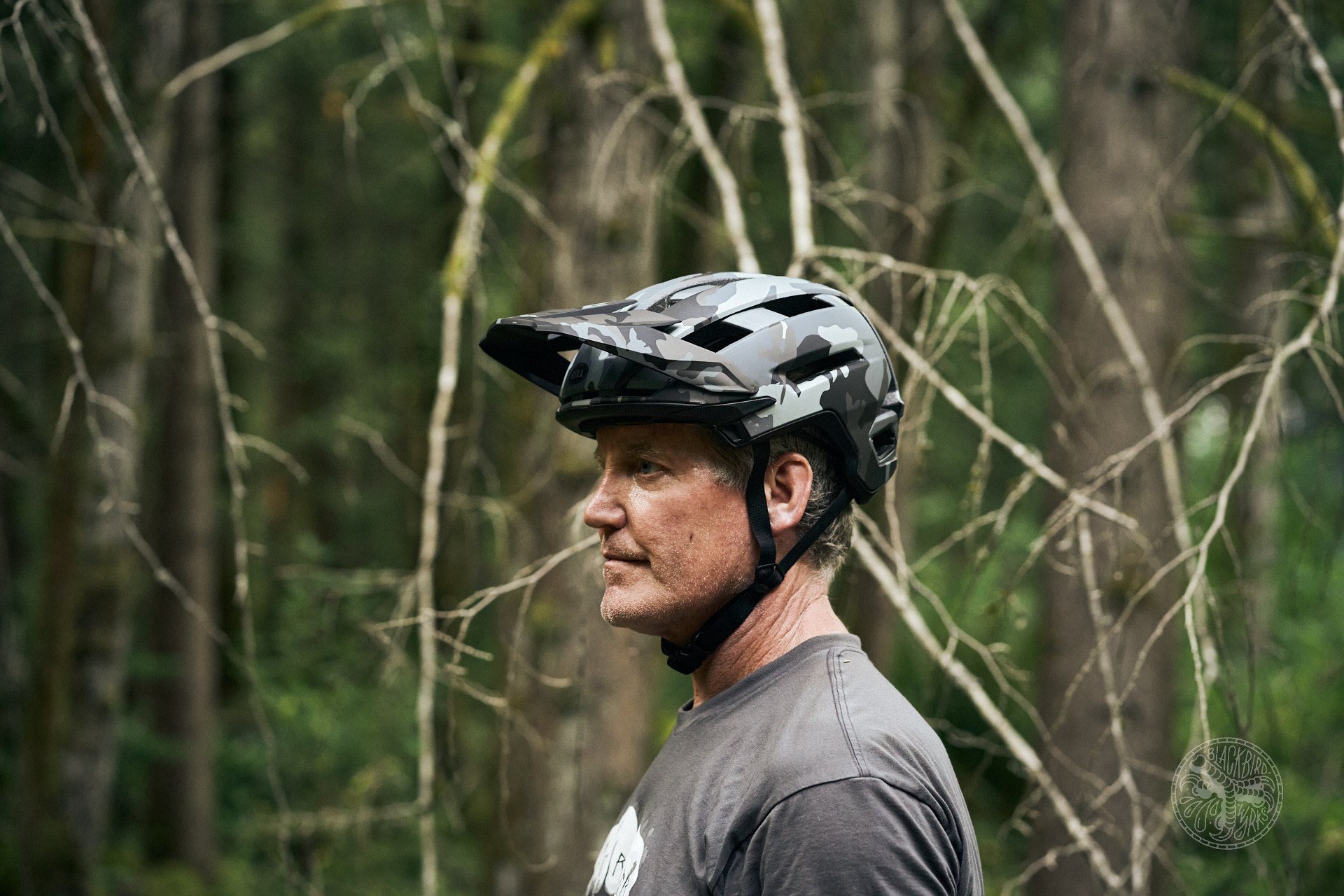
Half shell or full face, or is that half face or full shell?
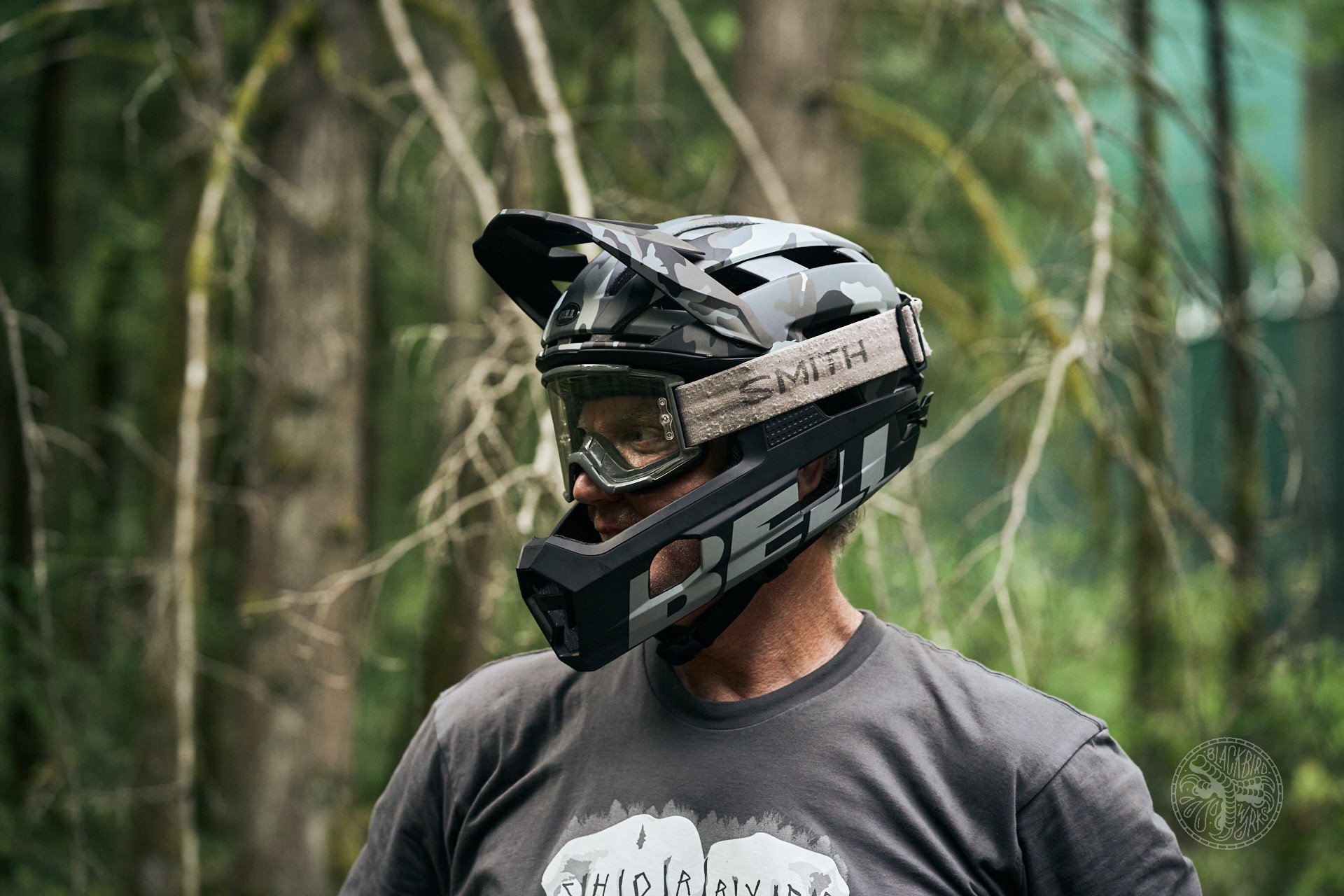
In full face mode with goggles that fit well and do not slide down all that much.
Bell Super Air R Spherical Features
"Spherical Technology’s Ball-and-Socket design, powered by Mips®, helps redirect impact forces away from the brain by allowing the outer liner to rotate around the inner liner during a crash." I never crashed, thankfully said my double-digits-concussed melon, so I am not sure how well this tech performs. The rotating feature is very noticeable when the helmet is on. I can swivel it, slide it and manouver in any direction (hence the Spherical name I surmise) about 10 degrees. The foam padding sits atop an entire piece of about a 1/2" strong foam which rotates on the helmet's thick outer foam. Two elastics keep the front of the piece moving smoothly while two rubber plugs take care of the back motion. The Bell Mips does not make annoying noises in my head like the Smith Mainline I tested did.
Easy 2-click removable chin bar. Well I'm not sure easy is the right word here as it took me a few tries to get it right with two clicks using my techno-challenged gloved-fingers but I easily had it figured out in short order...so I guess easy stays in the Easy 2-click feature.
Fusion in-mold polycarbonate shell. There is an astounding selection of 11 colours to choose from. Luckily I got the best: camo black and grey.
Progressive Layering™. Must be good cuz they TM'd it. The foam is way more extensive and comfortable than the previous Super Air I rode with.
3 level adjustable visor easy goggle storage. The visor pushes up easily, stays in place well and when in the mandatory middle position for maximum proper style points (no points for me on one shoot when the visor stayed high most of the ride - thanks for telling me, lensman Merdano).
Overbrow ventilation™ intake valves on the brow allow cool air in and through the air channel matrix. This worked very well; as I mentioned above it was one of the reasons I rode with it on full face mode almost exclusively.
A sweat guide pad that pulls moisture away from brow and eyewear. This does work well but like most brow sweat pads I have tried on other helmets it can't keep up to my excessive sweat on hot and heavy climb days.
Rubber grip on the back of the helmet keeps the goggle strap in place. Bell has combined the SUPER AIR logo onto a grippy rubber piece to aid in goggle strap stiction and it seems to work, although my Smith goggle strap is new and has a piece of silicone on the back to aid in avoiding strap slippage.
Different size cheek pads (I used the large ones) and a camera/light mount (which I never used).
Float Fit™: another trademarked item. The Bell fit thingy worked very well when locked. I found that it was easiest to fully tighten it down then put the helmet on rather than trying to tighten it while wearing the helmet. It was hard to get it to fully tighten when wearing the helmet and tightening it with gloves on.
Bell says the medium weighs 640G. My large tester weighed on the Home Ec teacher's scale at work was 769g. Other helmets I compare the Super Air R with are the Super DH at 860 for the medium, the Smith Mainline large I reviewed was 770g and the Troy Lee Stage I will be reviewing next year is a lighweighter at 690g for the medium/large.
US CPSC safety standard. I looked on the Virginia Tech helmet ratings site and the Bell Super Air R Spherical did not appear on it; I noticed very few Bells on the ratings so take for what its worth... Not much.
The stand out features for me are the comfort, lightness and exceptional airflow for both breathing and for cooling the sweats.
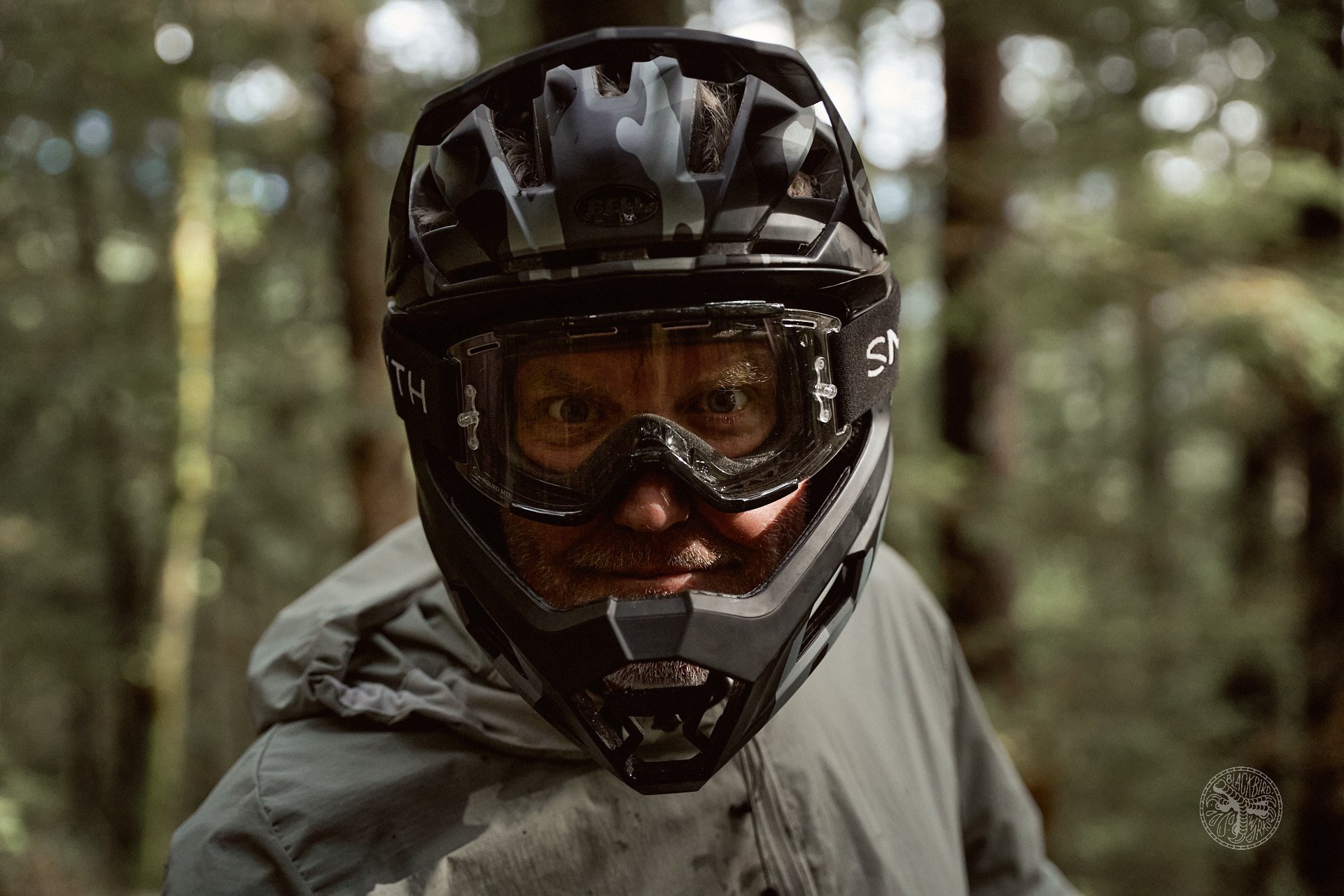
Vents on display, lot of room for air flow, and easy adjust visor.
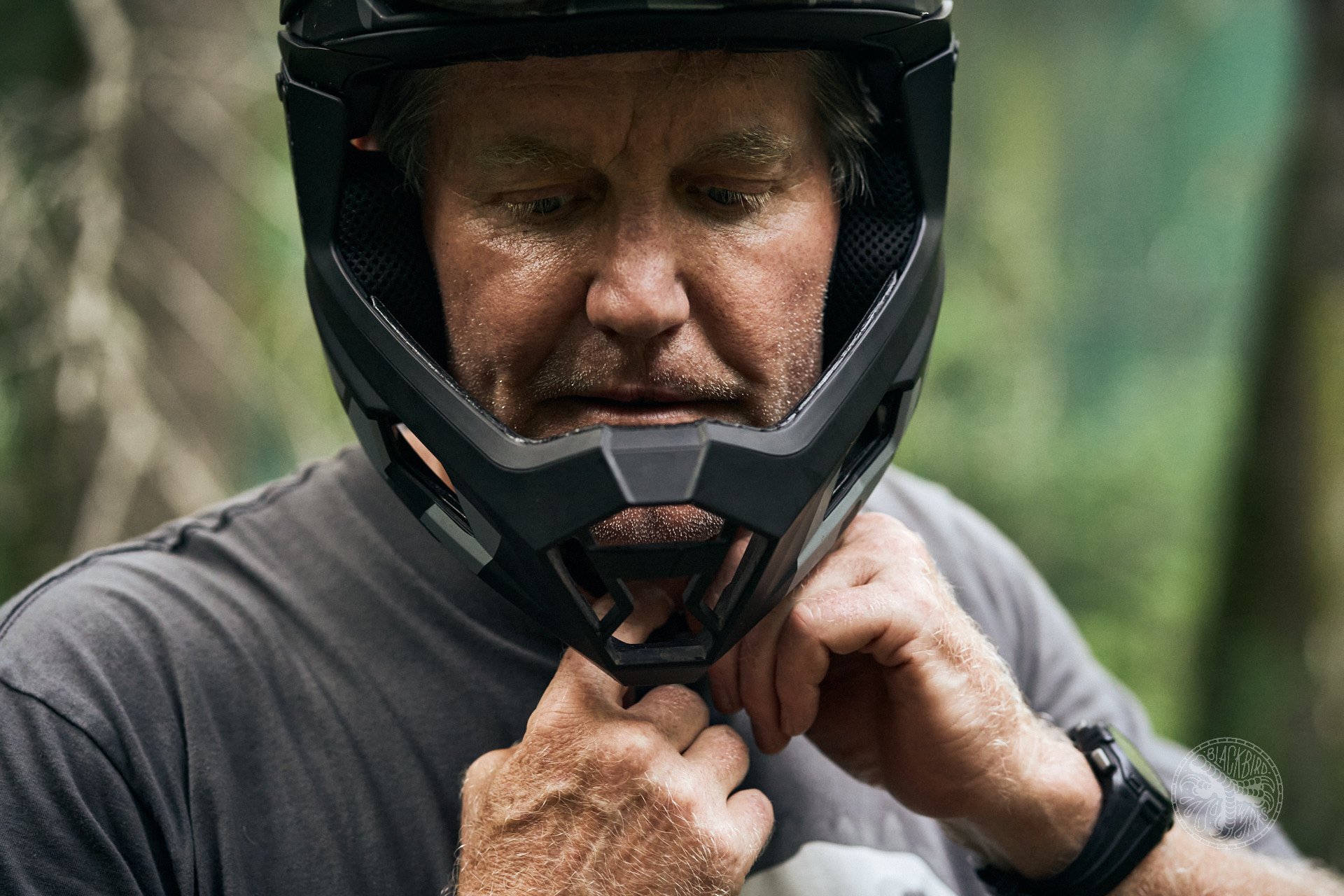
This and every full face helmet, in my opinion, should be worn with googles...and a visor, exept at night (when nobody can see it, unless your last name rhymes with Fogatkin). The large pie hole aids in easy breathing. As I fiddle with this strap I wish this lid had Fidlock like I wish all lids had.
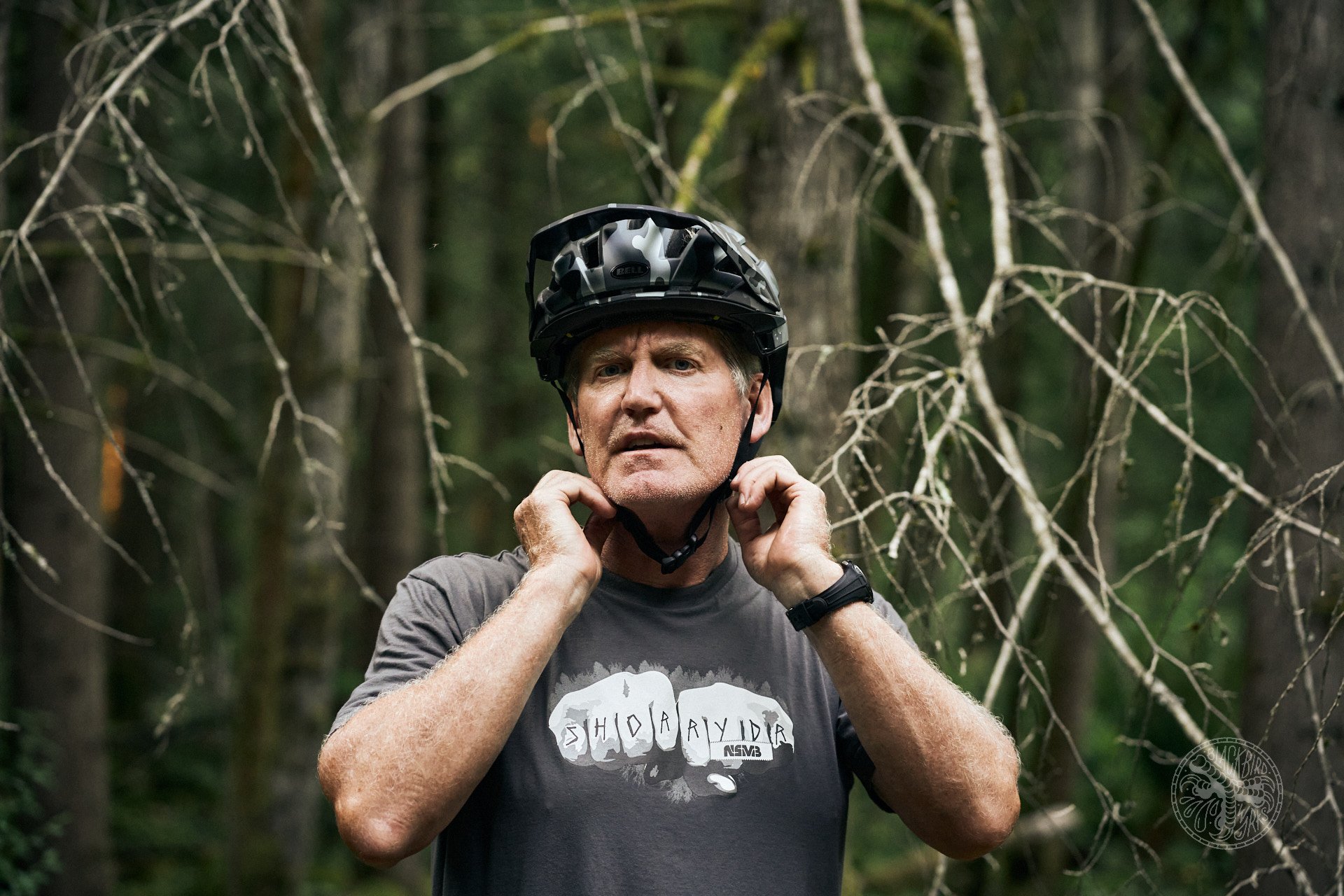
No bar just a regular half shell.
Conversion
In the words of an early adopter of the removable chin bar, Cam had this to say in his MET Parachute review, "Dual mode helmets are used in several different ways. There are riders who never remove the chin bar, those who decide on the chin bar based on the difficulty of the day's ride, others who remove and replace the jaw several times during a ride, and some who use convertibles as travel helmets because of the simplicity of bringing one helmet instead of two." I would say that other than the two or three rides I wore the helmet in half shell mode I fit into the the riders who never remove the chin bar category. However, I will admit to a number of rides where I used the decide on the chin bar based on the difficulty of the day's ride category where I just slapped on my Smith Session helmet because I was riding easy loamers that required a pile of climbing.
Regardless of those decisions I appreciate the ability to take off the chin bar. If I did not have the Smith helmet I would have reached for the Bell as a half shell. It is handy having a helmet for all the riding styles I partake in. Do I feel as confident wearing the Super Air R in full face mode as I do wearing the Troy Lee Stage? At first I thought not but after riding it on the gnarly trails and features that I wear a full face on I am now just as confident with the lightweight Bell as the Stage.
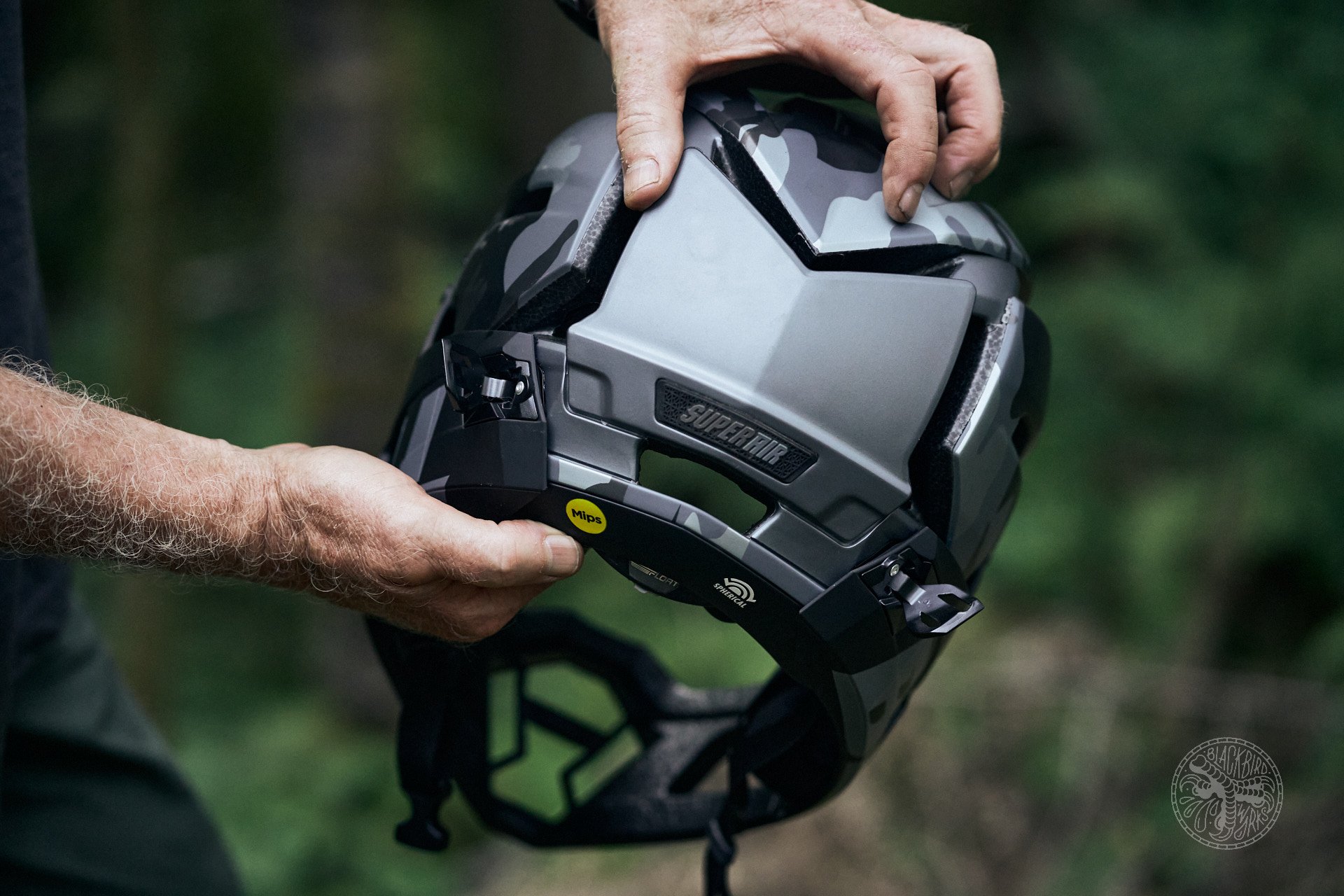
Two clips in the back just need to be pulled in order to release the rear locks. The rubber goggle stopper strip can be seen below the grey.
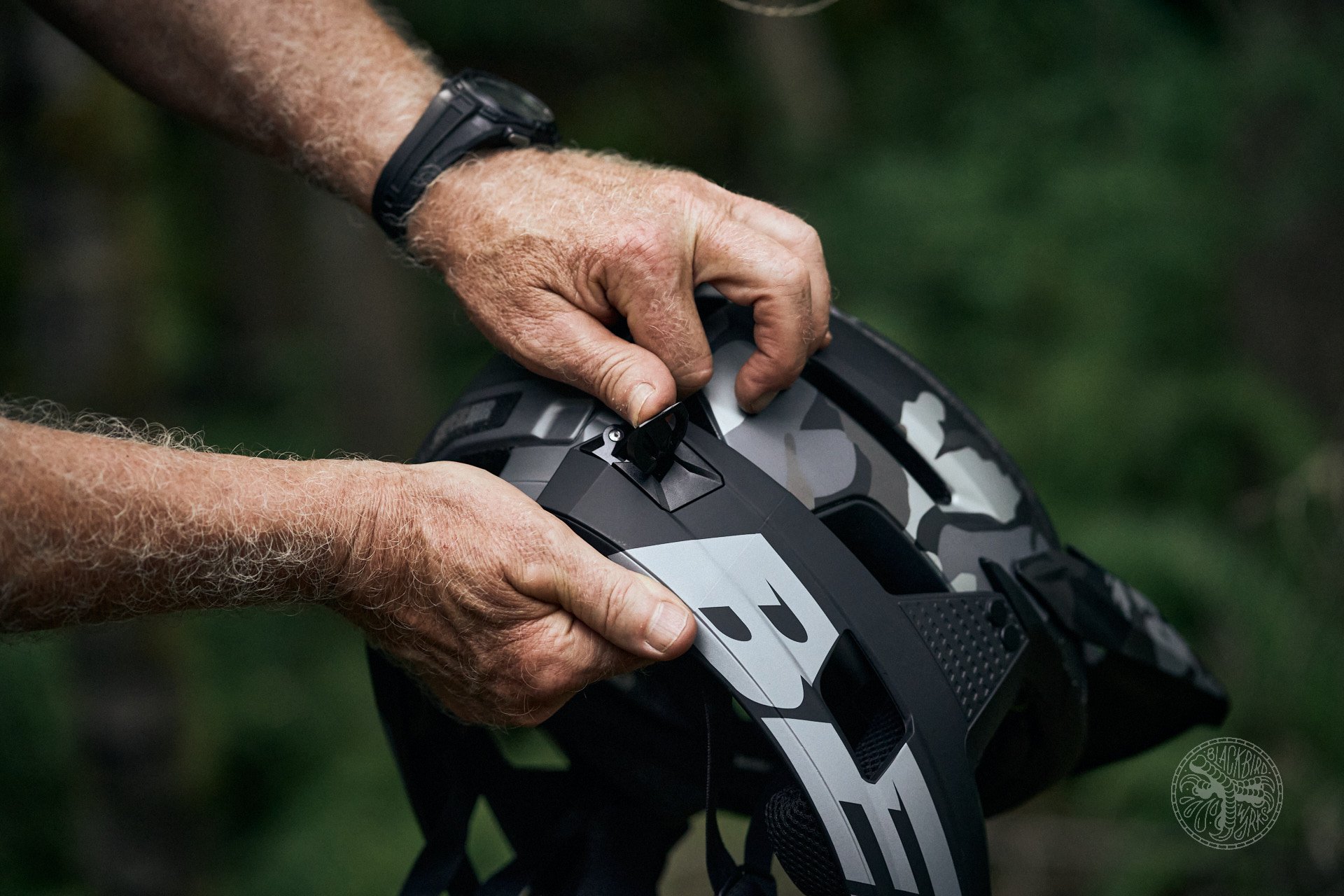
A simple push laterally will release the rear of the chin bar.
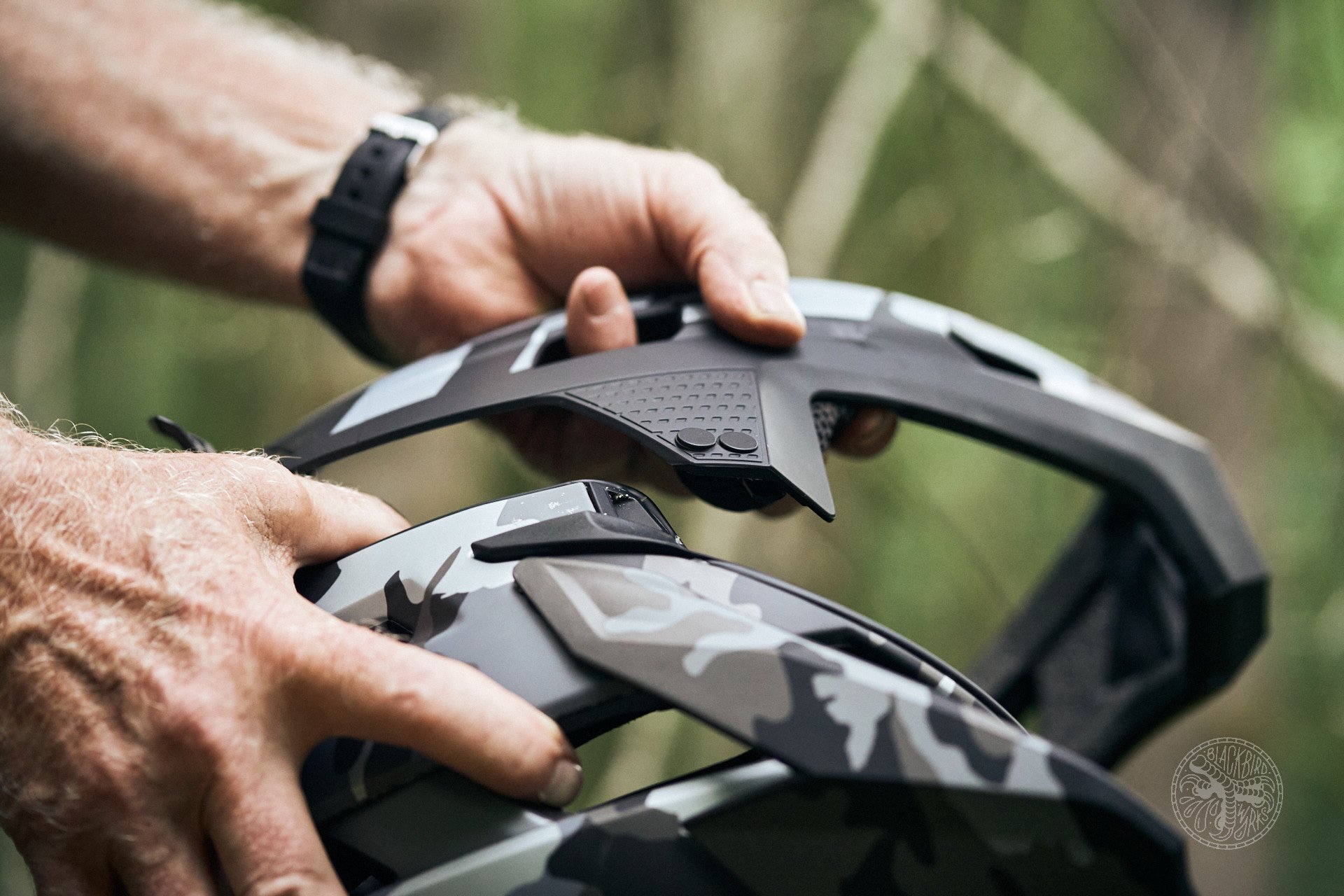
Once the rear latches are undone a simple tug on the cheek part of the bar will release the mechanism.
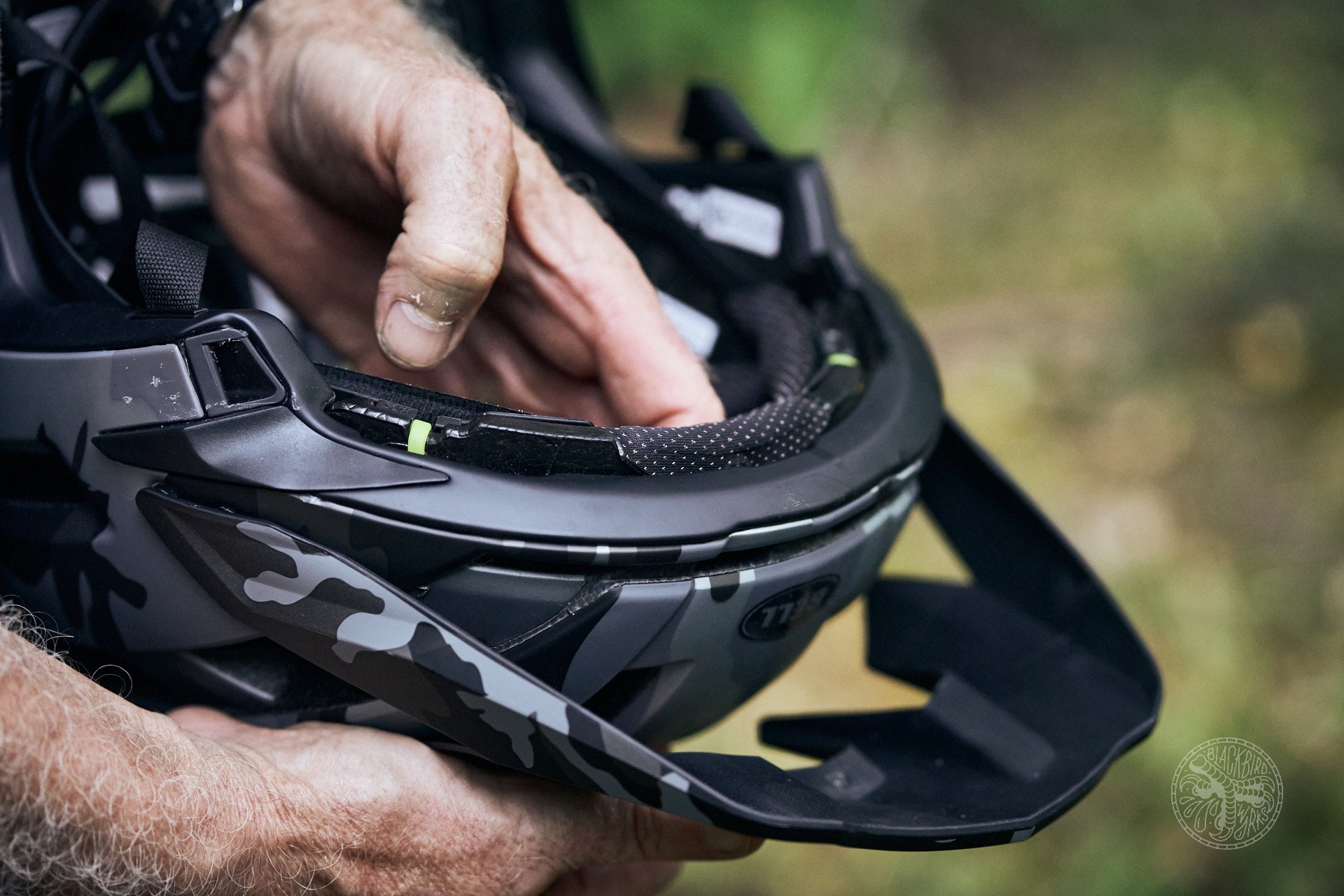
The cheek area receptacles are an easy fit for the chin bar frontal clips. The green elastic inner rotational helpers are visible in this photo.
The padding on the top, cheeks and rear section of the helmet is comfortable and quiet, unlike the noisy Smith Mainline and a few other Mips lids my budz have told me about. I thought the rotating spherical motion might get uncomfortable, but as soon as I got riding I did not notice it at all. One side benefit is the ability to push the bar up to spit, drink water and soccer sneeze. Fit wise, the large fit my head just about perfectly. The cheek pads gave a bit of extra support for the helmet. Even when riding the roughest trails, the helmet remained fixed in place with minimal jiggling. The Bell Super Air R Spherical is a light, comfortable, cool and protective helmet that is going to be my go to lid this season.
Bell Super Air R Spherical 300USD 410CAD
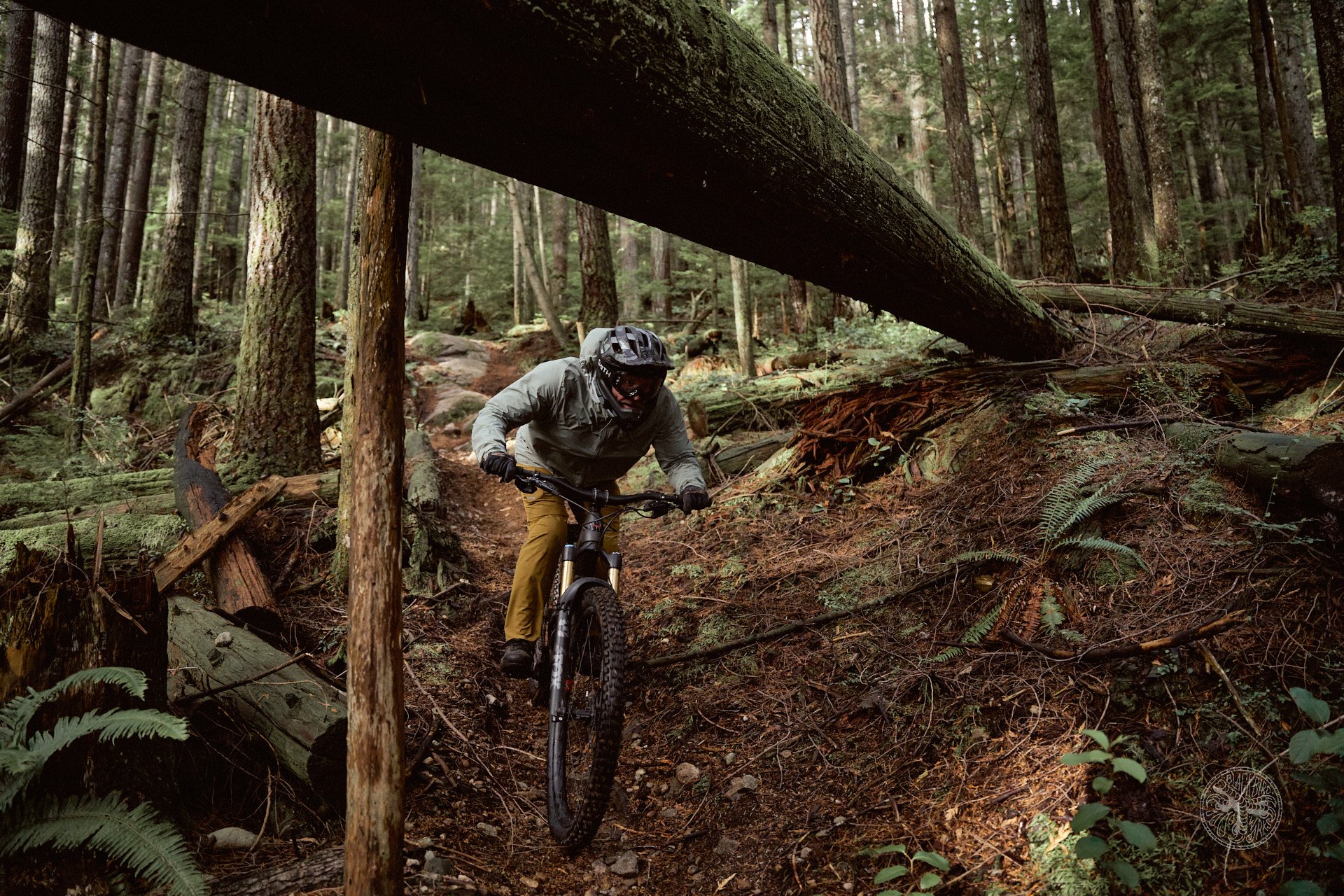
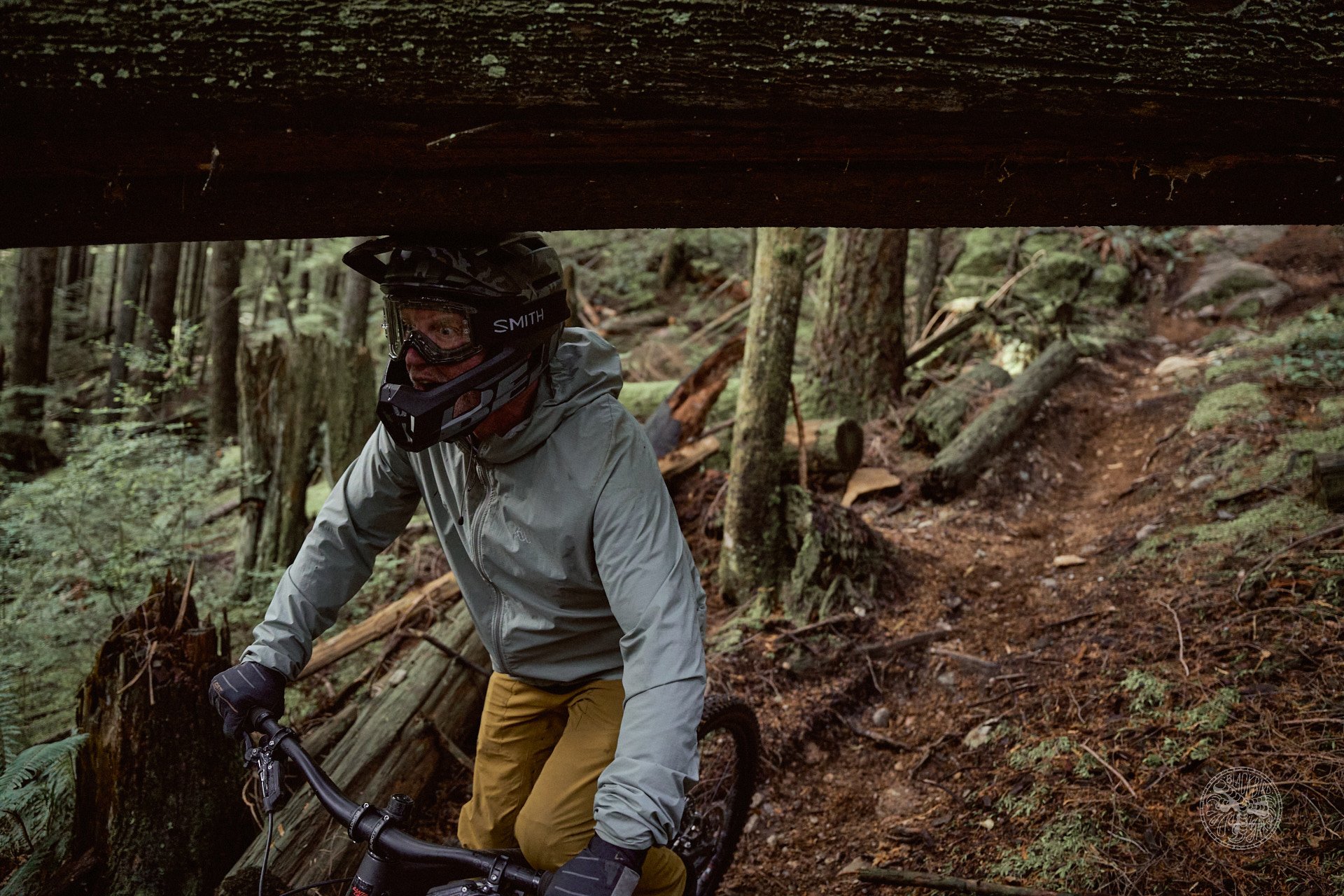
Bell Super DH Spherical
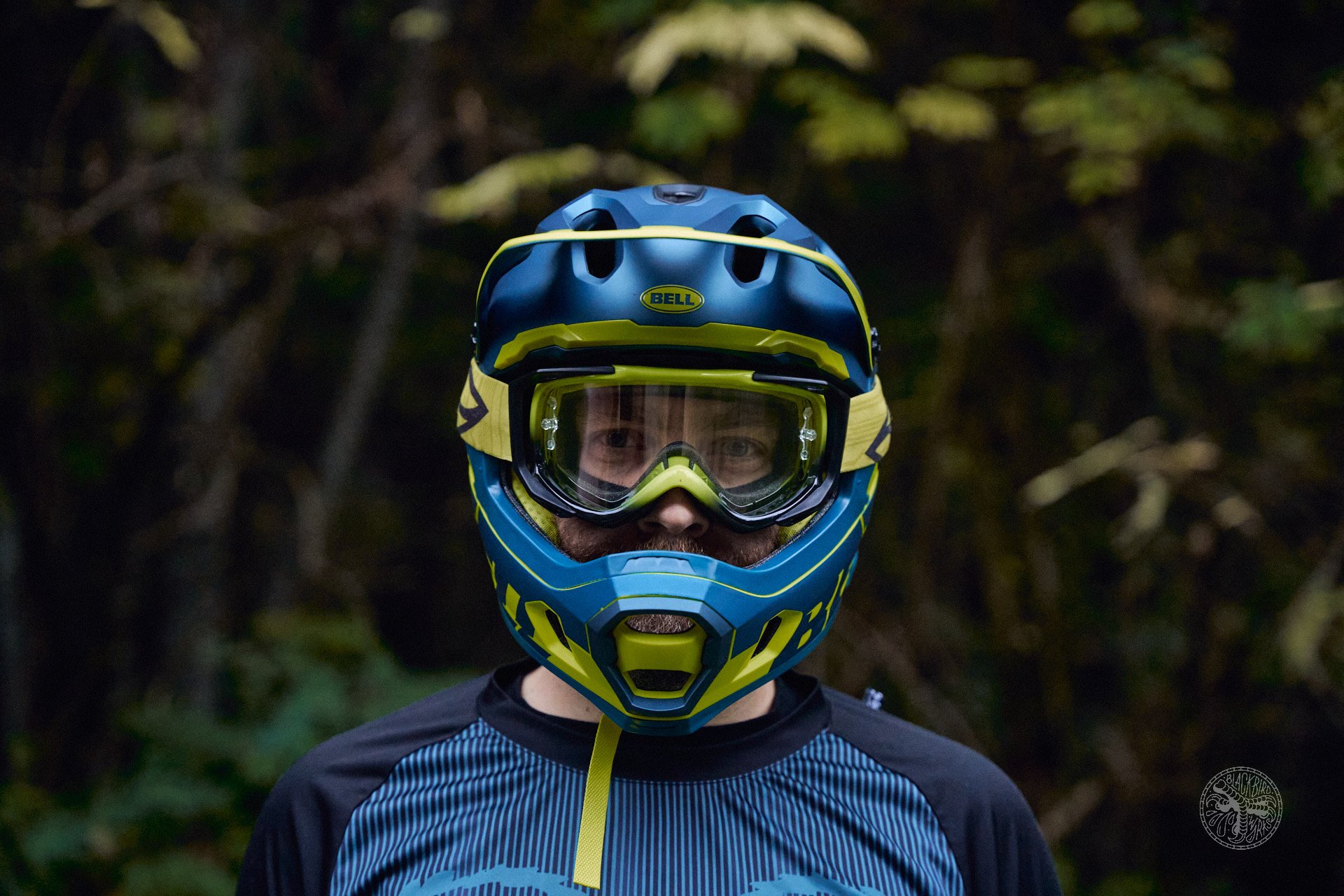
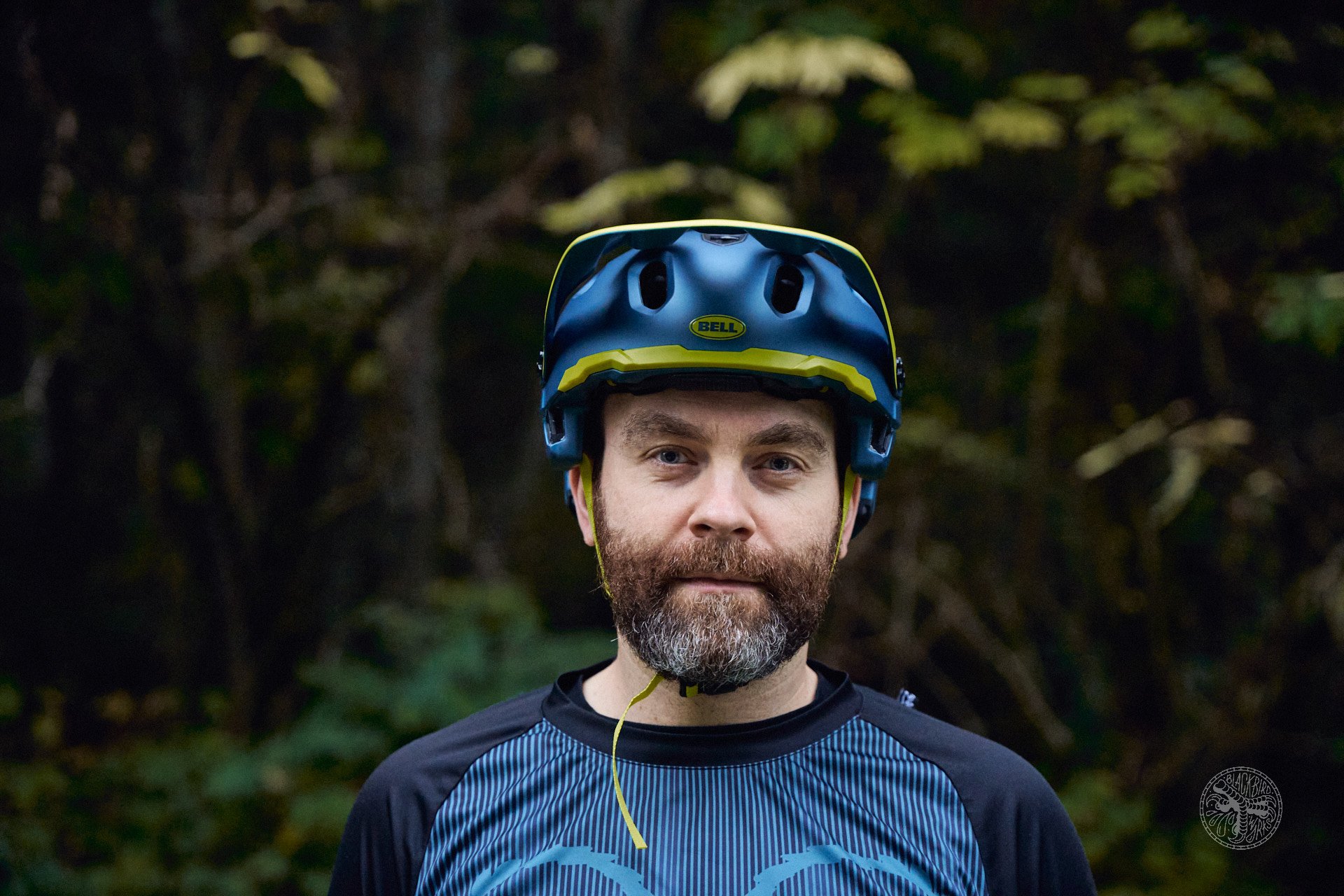
Bell is one of those companies that seems like it’s been around forever - and indeed, they’ve been churning out helmets since way before mountain biking was even a thing. As is the case for many modern bike helmet manufacturers, Bell got their start making brain buckets for motorsports enthusiasts. In fact, it was Bell that introduced the very first full face motorcycle helmet, way back in 1968.
Thankfully for us mountain bikers, helmets have come a long way since 1968, and we’re now at the point where we don’t even have to choose exclusively between a half lid and a full face. The Bell Super convertible helmet has been in the lineup for several years now, and in fact, my first convertible helmet was an early generation Bell Super, circa 2014. I loved that helmet, and I still do (it’s not in my regular rotation anymore, but it’s in surprisingly good shape considering its age).
I’ve owned several Bell helmets over the years, and one of the main reasons for that is the simple fact that their shapes seem to fit my oversized noggin exceptionally well. As Trevor mentioned, I’ve been wearing the Super DH Spherical for the last several weeks.
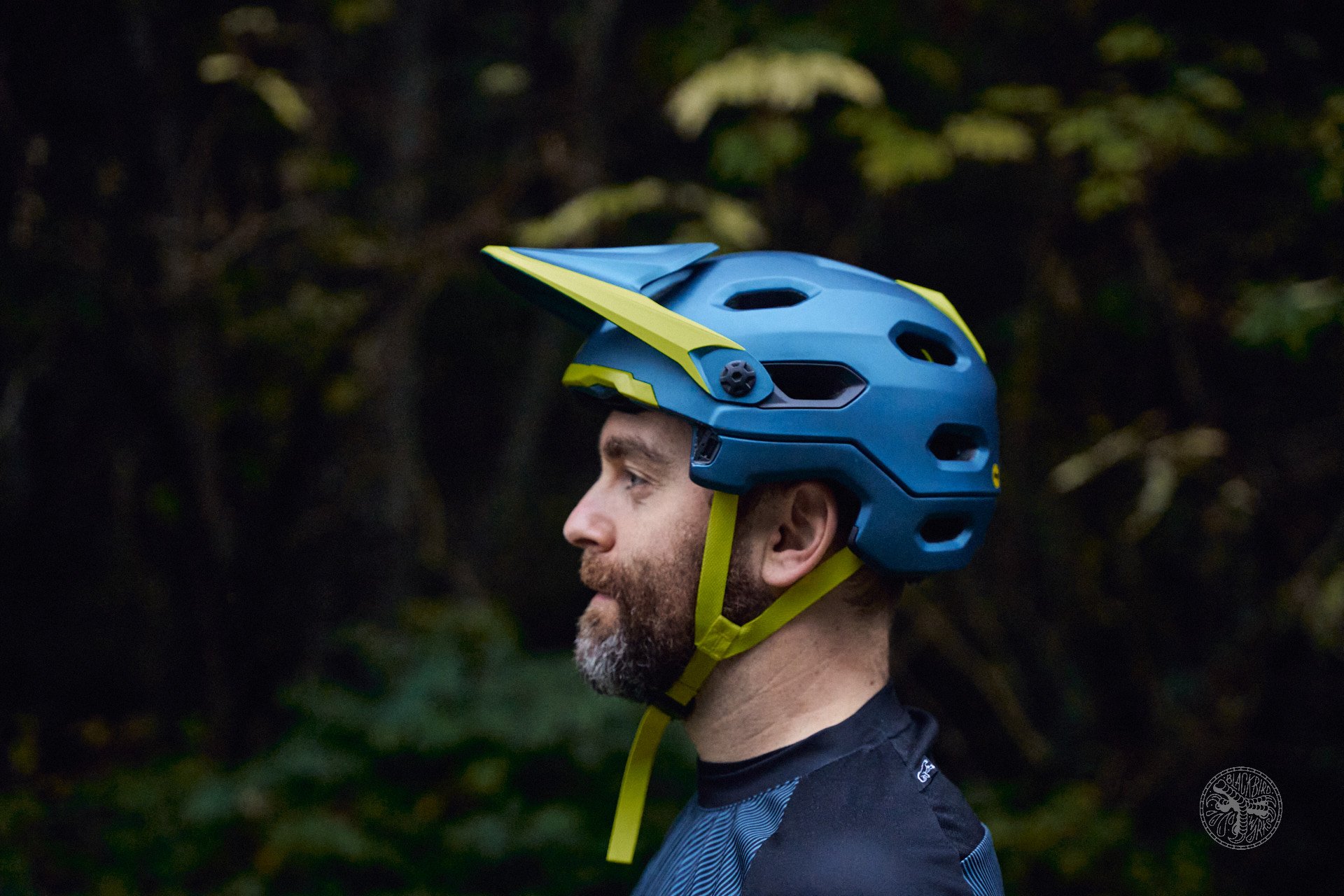
Even sans chin bar, the Super DH offers plenty of side coverage.
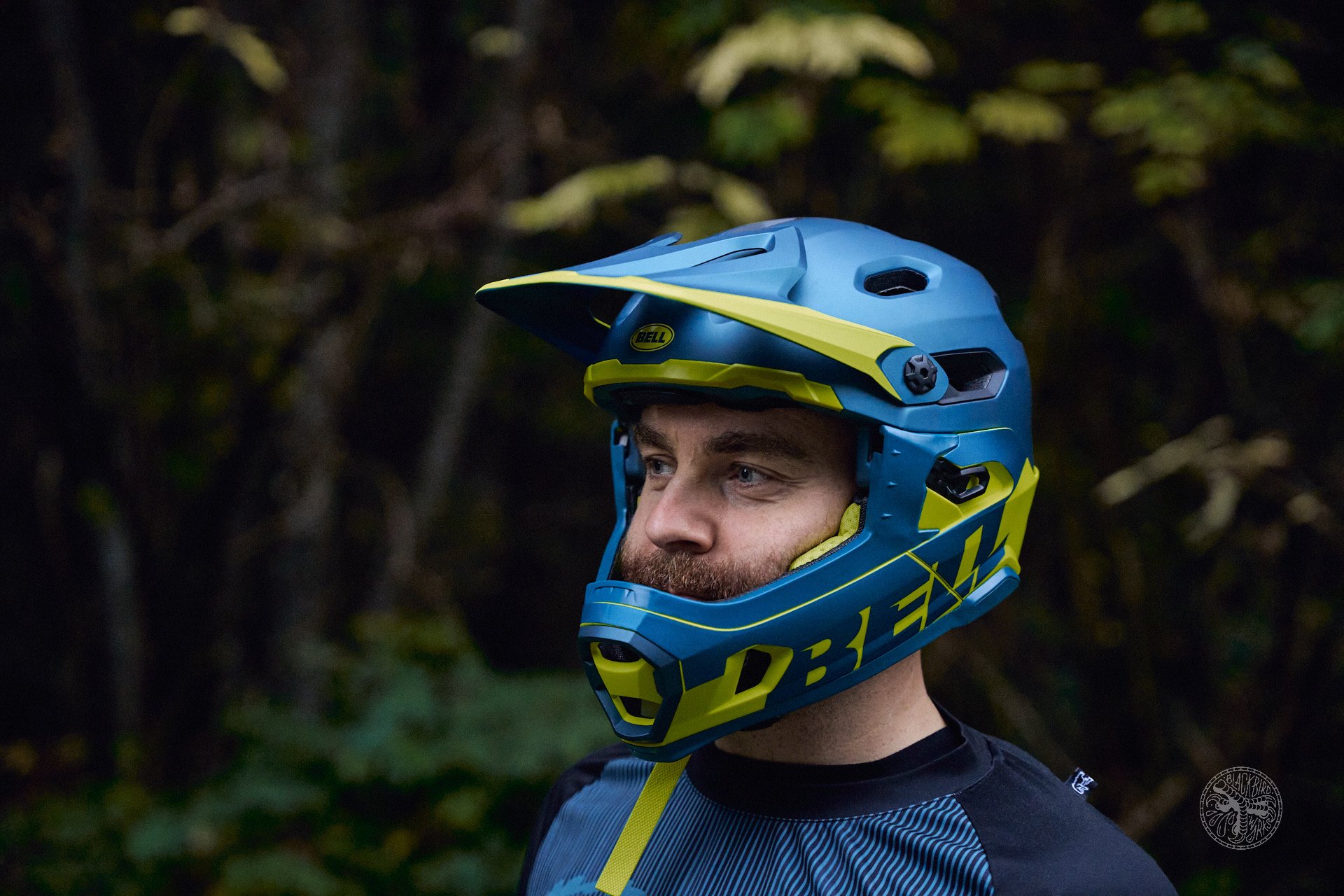
With the chin bar installed, the Super DH feels closer to a proper DH lid than a trail helmet with delusions of grandeur. Note: visor angle set to 80% kook - maybe between Trevor and I, we can come up with an inoffensive visor angle. No promises.
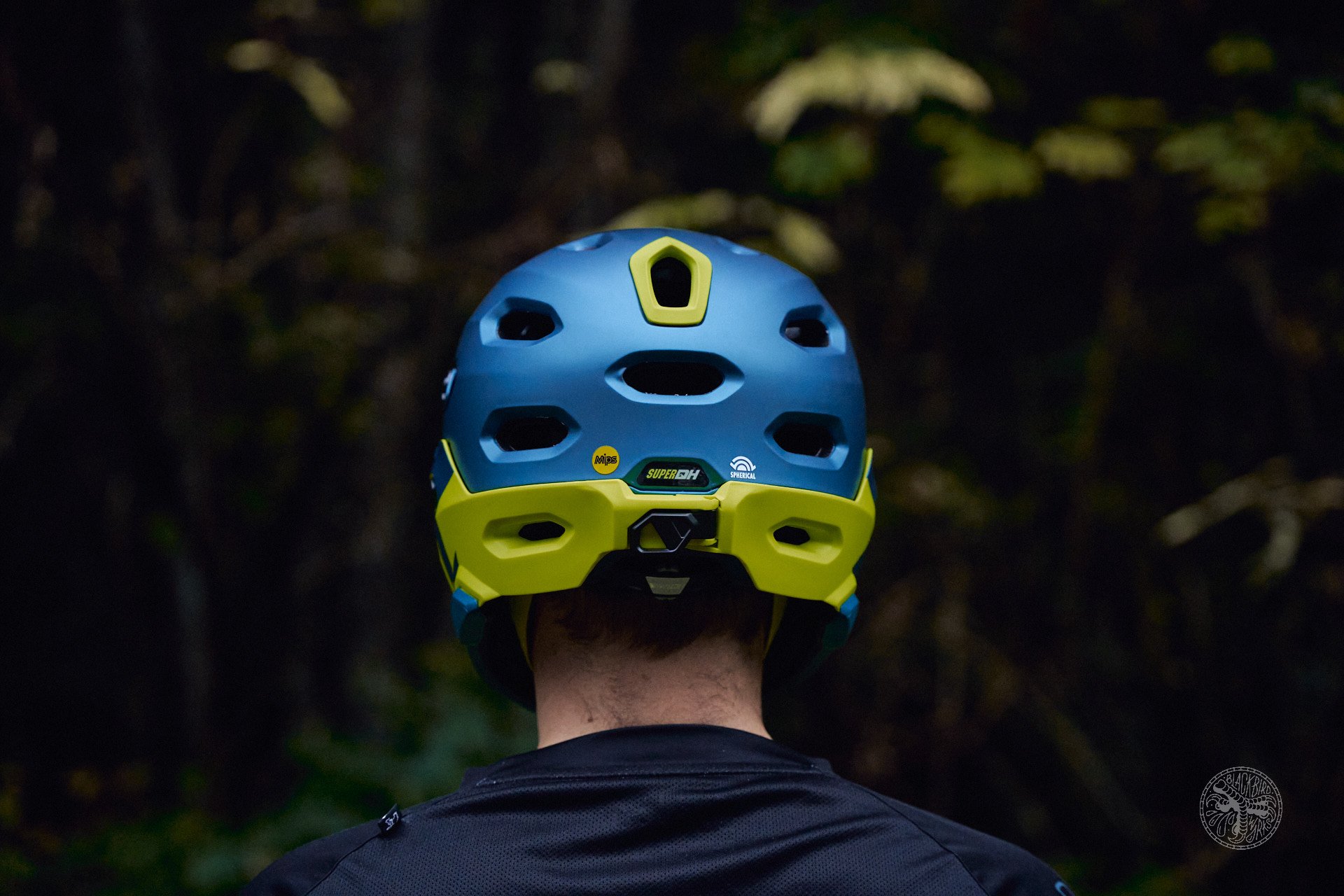
What the Super DH lacks in breathability, it makes up for in class-leading protection.
As the name suggests, the DH Spherical is the burliest of the three Supers, and it’s the only Super model that complies to both ASTM F1952-15 (DH) and ASTM F2032-15 (BMX) safety certifications. Available in a variety of colours, from literally camo, all the way up to hi-liter yellow, you’re bound to find a style that suits you. While only available in three sizes, the Super DH comes with an assortment of cheek pads that, along with the Float Fit DH ratchet harness, ensure a proper fit for most head shapes and sizes.
The Super DH is the third helmet I’ve reviewed in the past year, and it’s the third helmet that’s come equipped with a Fidlock buckle, as well as some iteration of MIPS. While these two features are somewhat polarizing within the mountain bike community, I’ve learned to appreciate the easy-to-use Fidlock buckle - and love it or hate it, MIPS is a feature that seems to be getting harder and harder to avoid in mountain bike head protection. The MIPS Spherical system found on the Super DH utilizes a ball-and-socket design that features an inner foam shell that can rotate independently of the outer shell, which can help reduce the forces on the brain in the event of an impact.
At just a hair over a kilogram for the fully assembled size large, the Super DH is not exactly a lightweight, but it’s worth noting that nearly half that weight is carried in the removable chin bar. To add a bit of context to that weight, the Super DH meets the same safety certifications as my Bell Full-9, while still being over 100 grams lighter - a feat made even more impressive when you consider that my Full-9 features a full carbon fibre shell, and lacks the extra weight of the chin bar latches. While I certainly wouldn’t put the Super DH in the same league as the Full-9, it is built to withstand the rigors of DH racing and bike park laps, so it’s safe to say that the intentions of the Super DH lie somewhat beyond those of other convertible lids.
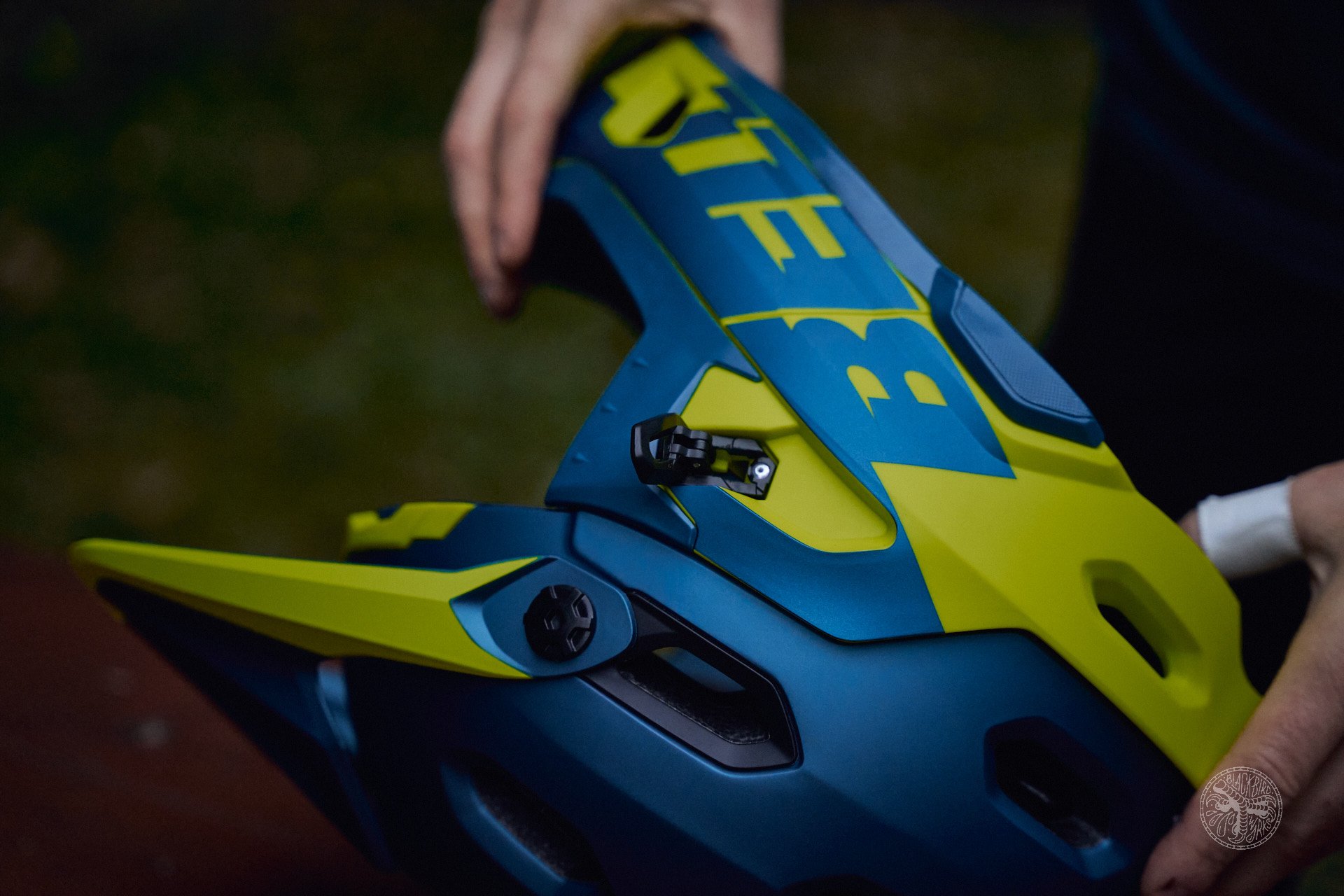
Docking clasps are stout and easy to operate - unless you have a broken thumb.
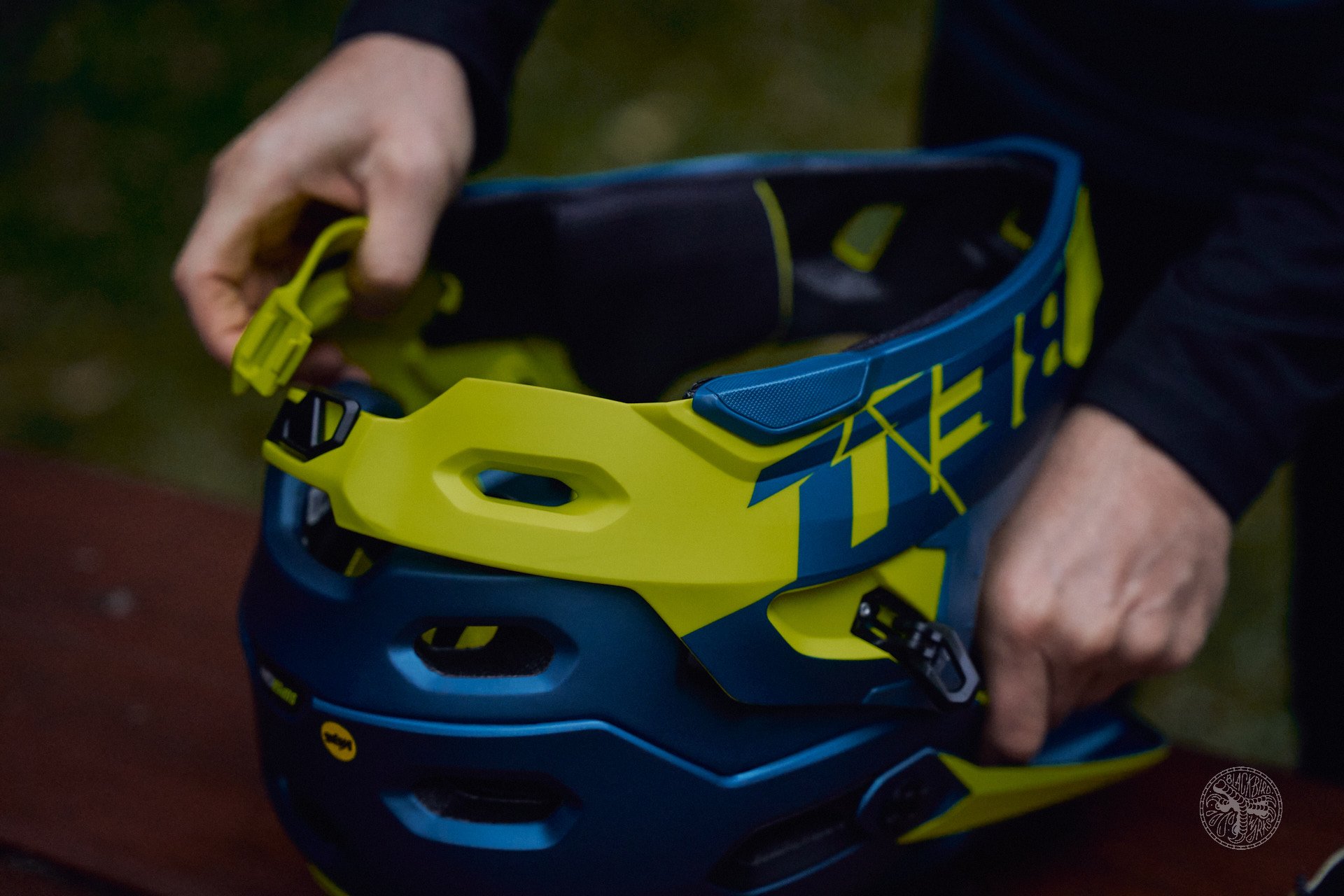
Removal/attachment of the chin bar takes about 30 seconds. Interestingly, I found that I had to make minor adjustments to the chin strap when going from one mode to the other - it seems that the helmet sits slightly differently on the head when the chin bar is installed.
The Super DH has a comfortable and very secure fit when wearing in full face mode. Whereas many convertible helmets feel more like half lids with a flimsy beak protruding from your face, the Super DH feels closer to a proper full face helmet. There was no detectable sound or wiggle from the MIPS interface while in full face mode, and the minimal venting offered just enough breathability when traversing at slower speeds in warm weather. For those riders prioritizing ventilation over DH levels of protection, they may be better off checking out Trevor’s review of the draftier Super Air R, as climbing or pedaling with any sustained effort in the Super DH quickly became uncomfortable, and resulted in fogged eyewear.
Of course, the biggest selling feature of a convertible helmet like the Super DH is the ability to quickly remove the chin bar, and I’m pleased to report that the Super DH performed admirably as a half lid. Fit was still very comfortable, with just the slightest wiggle noticeable from the MIPS interface. While it seems counterintuitive, tightening up the Float Fit ratchet a few clicks is effective at removing some of that wiggle, although this may just be removing slack from the harness straps, resulting in less wiggle overall. Speaking of the straps, I appreciate how Bell has simplified the chin straps on the Super - I’ve always found the under-ear strap adjustments found on most helmets to be extraneous, and prone to self-adjustment over time. A word of caution though: If you routinely find yourself riding in sloppy conditions, you may want to steer clear of the neon yellow chin straps.
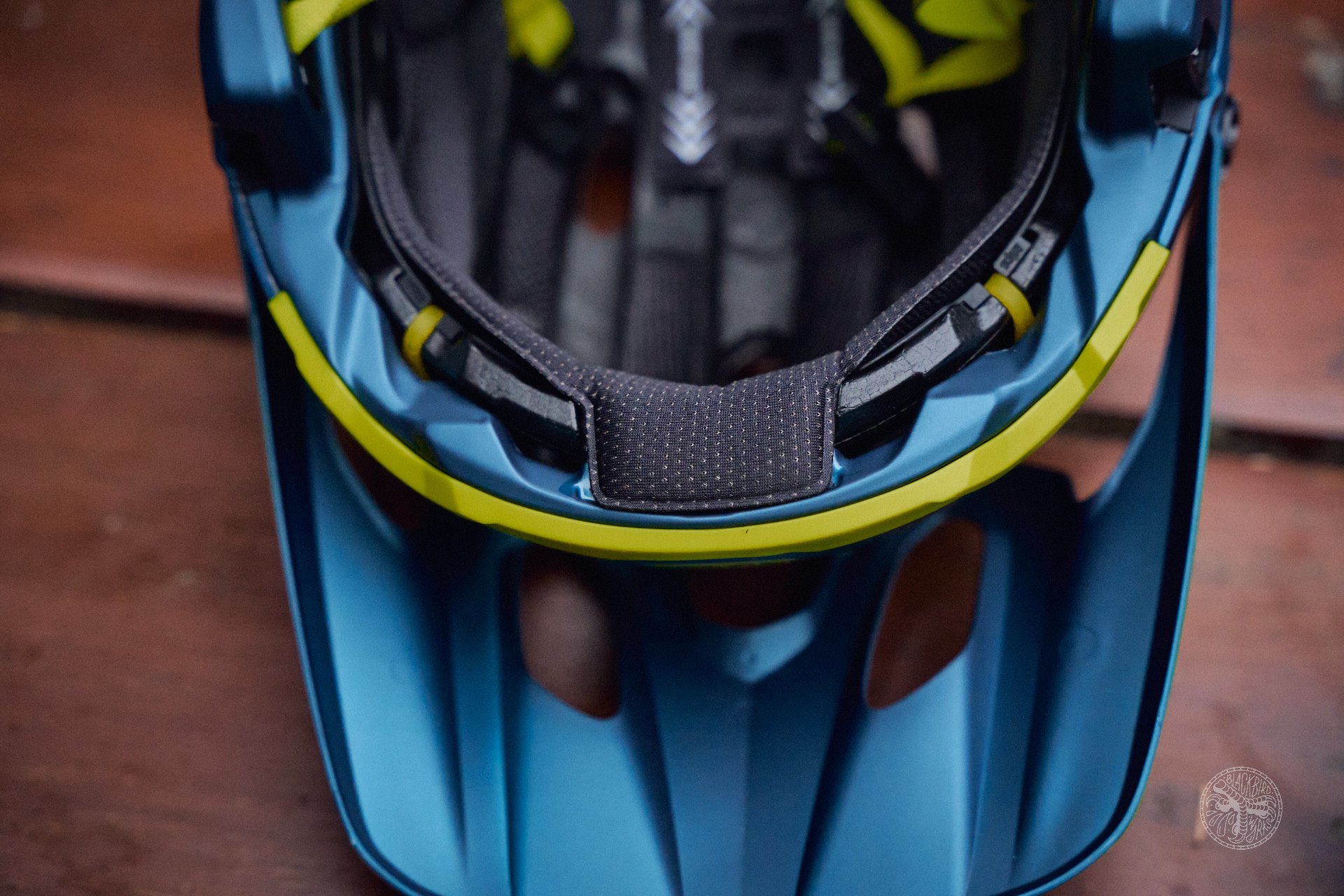
It does what it says on the tin, I'm just not sure if I'm a fan yet. The Sweat Guide pad channels sweat away from your face so it can drip down in front of your eyewear, instead of inside it.
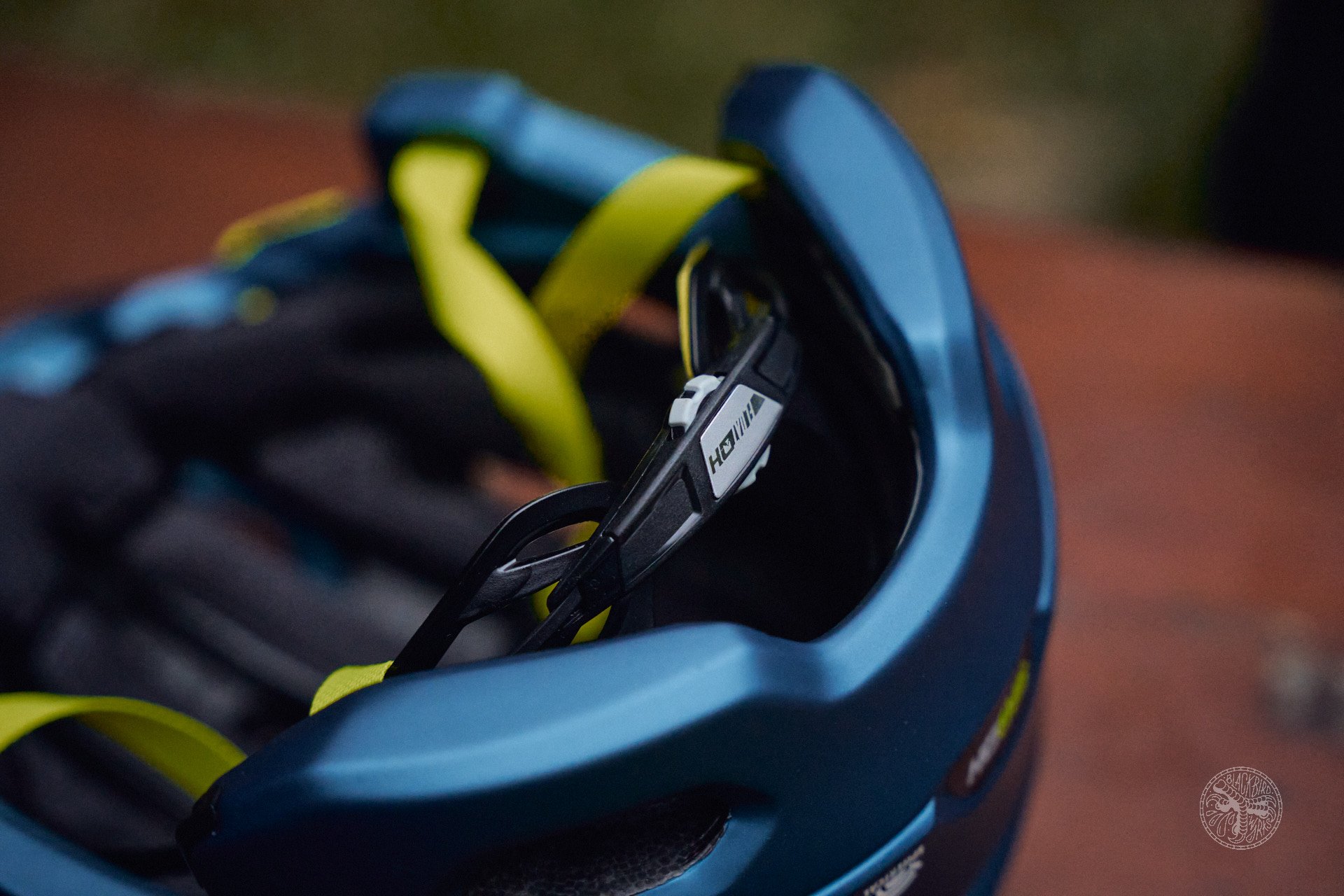
Like wrapping a catcher's mitt around your noggin, the Float Fit DH ratchet cradles the lower back of the skull and provides a secure and customizable fit.
Possibly the most interesting feature found on the Super DH is the “Sweat Guide” pad, which is a cleverly designed brow pad that wicks sweat away from your face where it can evaporate, or drip down in front of your eyewear, instead of inside it. In practice, the Sweat Guide pad actually does work, the proof being the large pool of sweat that would accumulate on my top tube during exceptionally long and arduous climbs. As satisfying as crystal-clear eyewear is, the neurotic in me couldn’t help worrying about how much of my own redirected salt water was finding its way into my headset - such is the ridiculous kind of thing that keeps a machinist up at night.
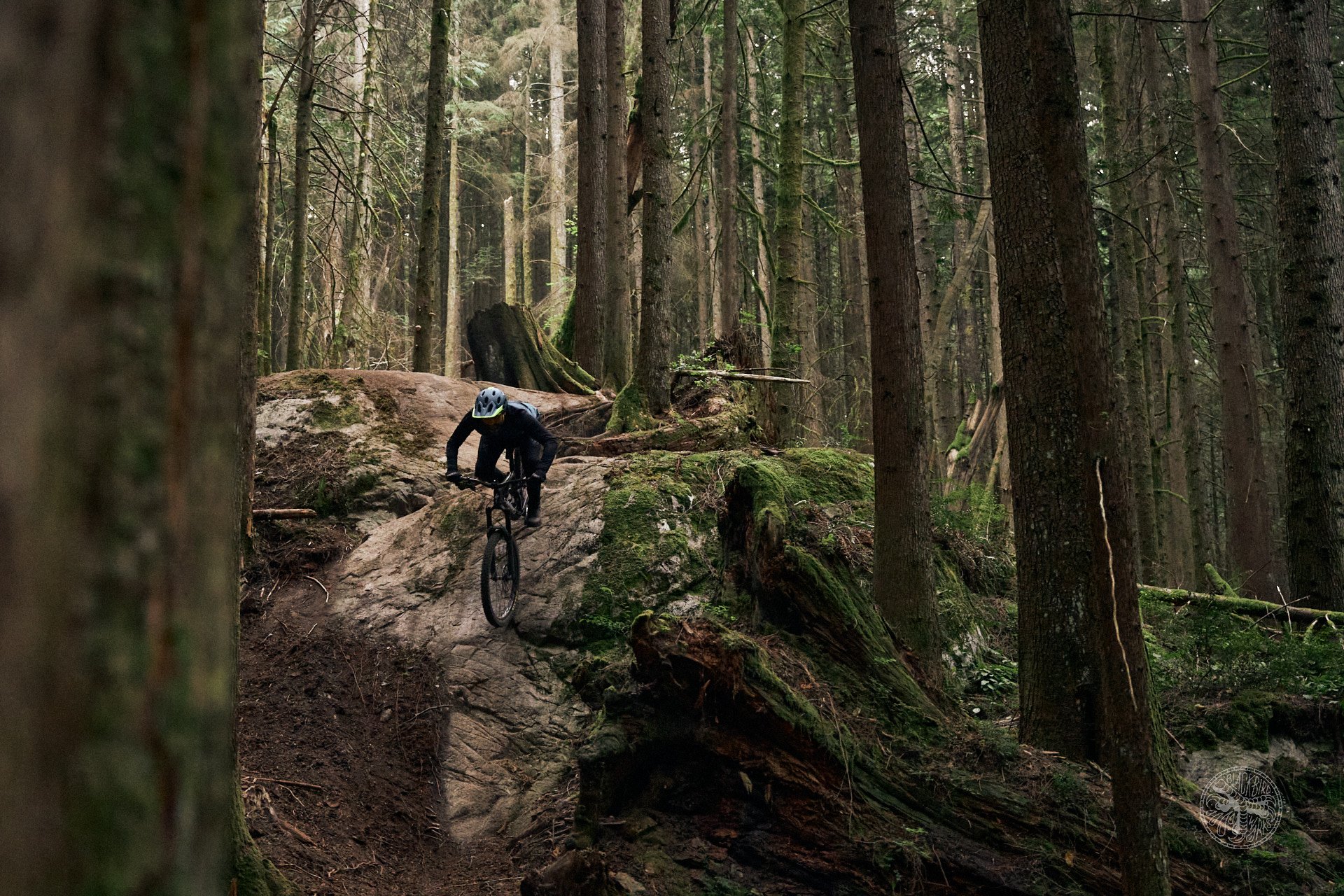
Likely wishing that I'd brought the chin bar along for this particular ride.
The Super DH is a unique helmet, even when compared to other convertibles. The ideal buyer for a helmet like this would certainly be the winch-and-plummet rider who is frequently climbing with a pack (or other chin bar stowage device) to access ultra-rowdy terrain. Alternatively, maybe you’re the type of rider who just wants to minimize their gear bag, in which case the Super DH has you covered for any conceivable mission on two wheels.
460 CAD / 350 USD
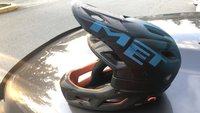
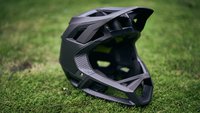
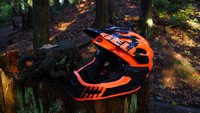
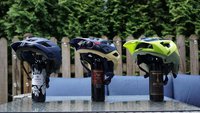
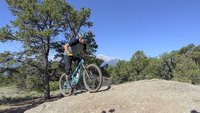
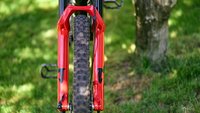


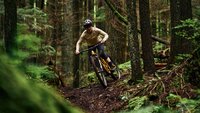


Comments
vantanclub
1 year, 5 months ago
Just a note on other MIPS helmets that make noise, easy fix is to take the yellow MIPS liner out, rub a candle on it, and put it back in. should stop all the noise.
Reply
Justin White
1 year, 5 months ago
Have you actually done that and had it work?
I had the same idea when my Bontrager Rally MIPS started squeaking annoyingly (prior Bell Super MIPS was not nearly as noticeable if it ever did), but I never got around to it, and then ended up in a much less squeaky Bell again.
Reply
Ryan Walters
1 year, 5 months ago
Ha! This is clever. As long as you're sure the wax doesn't react with the foam in any way.
Reply
Mammal
1 year, 5 months ago
My half-shell helmet came with a clever solution. They installed a bunch of little pieces of adhesive-backed, fuzzy-side velcro to the foam where the MIPs contacts. No noise.
It also provided a really easy fix for stopping the helmet from giggling around on my head when I've got a light attached for night riding. I just added some of the opposite-side velcro pieces to a few areas on the MIPS where the fuzzy side had been applied. I'm sure they will break away just fine in the case of a crash, but they hold things in place nicely (no dancing light beam).
Reply
HanSolo
1 year, 5 months ago
I’m a long time NSMB lurker, but just signed up to this website to post about the super DH because I feel strongly that for the riding around sea to sky, full face helmets make so much sense. We all must know people who have had terrible outcomes from bike crashes. I live in Squamish and for me and everyone in my house, full face helmets are required for all rides.
I wear a thin elastic belt around my waist. The chin bar of the super DH clips on easily, hanging off my left hip until I get to the trailhead. This is true for little tips and 1400m climbs. Doesn’t bother me at all and I can skip the dreaded pack. The Super air R chin does not clip on so easily because it’s not a full circle. For this reason alone the super DH wins. It’s easier to use without a pack.
Reply
Trevor Hansen
1 year, 5 months ago
Are you still pedalling that 40 pound Norco at night Tim?
Reply
Tim Coleman
1 year, 5 months ago
It's the only pedaly mountain bike I own, so yeah, it's my commuter and night ride bike!
Reply
Justin White
1 year, 5 months ago
"biggest selling feature of a convertible helmet like the Super DH is the ability to quickly remove the chin bar"
Honestly, the biggest selling points, to me, of my convertible (Super 3R MIPS), are the weight, the MIPS, and largely the the fit and the camera/light mount. I do a little of the "how risky is this ride" choosing to take the chin off, but I could easily achieve the same (and often do) by just taking my previous half-shell (also chosen because of both fit and light mount: Bontrager Rally MIPS). The convertible-ness is mostly just a bonus that provides that "take just one helmet on a trip" aspect for, say, a weekend at the park and then gentle XC for "recovery". Of course, most of the time that "recovery" ride ends up getting rowdy enough (because we just can't help it) that the chin bar would not be an excessive choice anyway, so six to a half dozen.
But, if there was a lightweight [permanent] full-face option with a light mount and that fits me well, I'd easily pick that up to replace the Super 3R someday. The light mount is quite important to me, because no strappy mount is as easy tyo use, as secure, and as non-wobbly as a built-in one, and without good solid lights I would actually have to accept that biking has "seasons", hehe.
Strongly agree that those brow vents really do something useful, too..
Reply
Ryan Walters
1 year, 5 months ago
It's too bad the Fox Proframe I reviewed earlier in the year doesn't have a light mount, because it otherwise seems to tick all the boxes you're looking for. Mind you, can't go wrong with the Bell Super either.
Reply
Justin White
1 year, 5 months ago
Yeah, when the Proframe came out it looked like a great choice, but I'm going to try to stick to my guns and keep insisting on mounts. And yeah, some folks are going to say "just stick on a GoPro base, they're quite secure and solid", (actually quite relevant since I try to always get helmet lights with GoPro mounts) which in fact I did on my old full-face, but it's actually been a while since I had a helmet with enough surface area in any one spot to fit a sticky mount.
Coincidentally, picking up a half-shell Super on clearance a while back is how I learned that Bells fit me pretty well!
Reply
Tim Coleman
1 year, 5 months ago
"The ideal buyer for a helmet like this would certainly be the winch-and-plummet rider" also ideal for anyone who races enduro where you always have to be wearing a helmet (including the climbs) and have to wear a full face on the timed stages.
I'm still using a Super DH for pedally night rides. I find the light jiggles about too much with an open face helmet. The chinbar (and cheek pads) make the helmet more secure for the descents. I find adding and removing the chinbar on the Super DH really quick and easy.
Reply
Justin White
1 year, 5 months ago
Chin and cheeks also help with warmth! Even on easy winter rides I'll grab the convertible with bar on just to help keep the cold off my face.
Reply
Lyndon Rush
1 year, 5 months ago
I have the same blue and flo yellow model and to keep it looking fresh, I soak the chin strap (easy to remove) and cheek pads in Oxy Clean.
Reply
Squint
1 year, 5 months ago
The caption on the last photo is exactly why I can't see myself ever buying a convertible. I'd be much too tempted to leave the chin guard off. FF all the time.
Reply
Andrew Major
1 year, 5 months ago
It would be awesome to see what Bell could do in the space of a trail-weight fixed-chin bar full face. I love my Kali Invader 2.0.
Aside from venting, the lack of chain bar hardware and reinforcement around the ears makes it the best full face I've worn in terms of communicating with other trail users. And yeah, there's never a question of whether I should have the chin bar on or off for whatever section of trail I'm riding.
Reply
Squint
1 year, 5 months ago
I would definitely look at a Bell with a fixed chin bar for my next lid, they have a very strong history of reliable head protection. I remember when the V1 Pro was the standard (but awful compared to modern lids).
I'm pretty happy with my iXS Trigger FF. The Invader was in the running as well, but couldn't put my hands on one nearby.
A riding buddy said he found he would get more dehydrated when he used his chin bar and I agree it inhibits drinking. I would appreciate some consideration given to hydration tubes with FF helmets.
Reply
Justin White
1 year, 5 months ago
Tubes are easy! It's bottles that are difficult with the FF. I find I drink way more with a pack vs bottle when I have a chin bar on and it's cooler weather. Of course, when it hot enough to empty pair of bottles, you're more likely to be popping the helmet off just for cooling, so either bottles or pack is getting drained out most likely
Reply
OldManBike
1 year, 5 months ago
I'm a fanatic about reducing concussion risk. My view that the Super Air was the best option available from that perspective was why I got one. I've used it, without a chinguard, as my trail helmet for the past couple years. I like it and if I were buying a trail helmet today it'd be a serious contender again. While I have little faith that regular MIPS provides a real-world concussion-risk-reduction benefit, I believe MIPS spherical is the most promising current option. I owned a Super DH before that but found it clunkier than I was willing to wear for trail use so used it only as a fullface DH helmet. By contrast, the Super Air works great as an everyday helmet. My biggest gripe is what Trevor mentioned about not being able to tighten or loosen the dial in the back while it's on; how on earth a company as experienced as Bell muffed that up I'll never understand. Also I find the purported sweat guide to be fairly useless. But for me those are niggles. Bottom line is it's a very comfortable, good-lookingish helmet that I believe maximizes my chances of walking away from a crash without damaging my brain, so for me it's a winner.
Reply
OldManBike
1 year, 5 months ago
Before this I owned a couple Kali helmets, and my wife and kid both have Leatts. I admire both companies' commitment to concussion safety a lot. But, speaking as a non-expert and non-insider, I came to believe that the basic spherical design was superior to theirs. If my head's hitting the deck, I'm not confident that one of the squishy bumper things is going to be in the right spot to do me any good. With spherical, the entire inner shell of the helmet in engaged. I believe that's a critical advantage.
Reply
Andy Eunson
1 year, 5 months ago
I see the Super Air in the exact same way as Trevor. As with many helmets my size is between small and medium. I went medium with my Super but a small might have been better. I didn’t realize when I was trying them on that the back of the head adjustable thing was adjustable up and down so the medium felt better in the shop. Because I needed the thing moved up I also find adjusting the wheel troublesome. Other than that it’s comfy and deals with my sweat better than other helmets.
Reply
Lu Kz
1 year, 5 months ago
I always thought the chin bar ruined a good helmet with the Super - never thought it was comfortable to the point I'd rather have a helmet that doesn't have a removable chin bar. I picked up the top half a little while back (as well as the Giro Manifest at the same time - thanks Ian) and painted it blue/purple chameleon shift, because black is boring. I've since wanted to try the chin bar again because I realised the helmet I own and the two I've tried are from three different generations, largely because my Fox Proframe is really getting on and soon due for a replacement - I already replaced it for park duty.
Reply
Please log in to leave a comment.